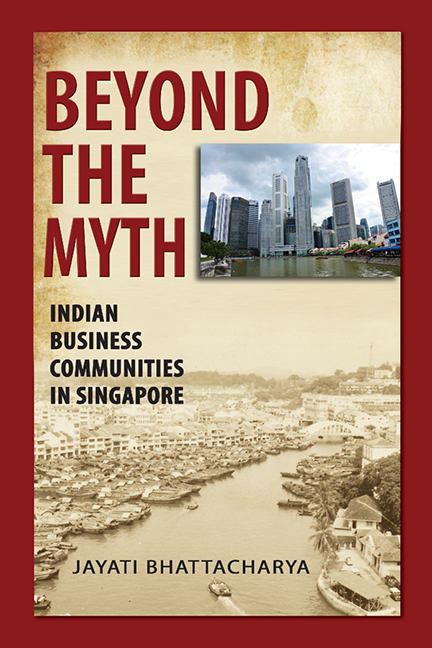Book contents
- Frontmatter
- Dedication
- Contents
- List of Map, Tables and Figures
- Message by Mr R. Narayanmohan
- Foreword by Professor Tan Tai Yong
- Message by Ambassador K. Kesavapany
- Acknowledgements
- List of Abbreviations
- Introduction
- PART ONE
- PART TWO
- Conclusion: Surging Forward
- Appendices
- Select Bibliography
- Index
- About the Author
Foreword by Professor Tan Tai Yong
Published online by Cambridge University Press: 21 October 2015
- Frontmatter
- Dedication
- Contents
- List of Map, Tables and Figures
- Message by Mr R. Narayanmohan
- Foreword by Professor Tan Tai Yong
- Message by Ambassador K. Kesavapany
- Acknowledgements
- List of Abbreviations
- Introduction
- PART ONE
- PART TWO
- Conclusion: Surging Forward
- Appendices
- Select Bibliography
- Index
- About the Author
Summary
Since the pioneering work of Kernail Singh Sandhu and S. Arasaratnam, studies of Indian communities in Singapore (and Malaya/Malaysia) have grown significantly in scope and content. Even before “Diaspora Studies” became topical, a spate of scholarly and popular accounts, detailing the rich diversity and spread of overseas Indians in Southeast Asia, published in the 1970s and 1980s, has enriched our understanding of the movement to, settlement in, and socialization of Indian communities in their adopted homelands outside the Indian subcontinent. The monumental trailblazer, Indian Communities in Southeast Asia, edited by K.S. Sandhu and A. Mani (first published by the Institute of Southeast Asian Studies in 1993, and reprinted in 2006) marked a significant scholarly milestone in the development of the field by bringing together, in one volume, in-depth analyses of Indian communities settled in various parts of the region. This was followed in 2006 by the publication of the Encyclopedia of Indian Diaspora, produced by a group of scholars from the National University of Singapore, which is, to date, still probably the most comprehensive and authoritative account of the global South Asian Diaspora. Close at its heels was the sequel to the earlier book by ISEAS, Rising India and Indian Communities in East Asia, edited by K. Kesavapany, A. Mani and P. Ramasamy (published in 2008), which provided scholarly perceptions of the changes and transformations of Indians in East Asia with India's economic rise. Scholars in Singapore have, in many respects, provided an intellectual lead on research on the Indian Diaspora.
Continuing in that tradition, this volume is a useful addition to the expanding literature on the Indian community in Singapore and its major contribution lies in the fact that it is perhaps the first to focus exclusively on the local Indian business community. Taking a long view of the historical association of Indian business communities with the development of Singapore, the author explains the roles played by these communities in the country's modern economic history. Since its inception as a colonial port city, Singapore has attracted business and commercial classes to its shores. Among them were Indian trading communities, which already had their own long history of engagement with this part of the world. Setting up bases in Singapore, these commercial classes grew their businesses across the Indian Ocean through intricate and expanding trading networks, based mainly on family and kinship ties.
- Type
- Chapter
- Information
- Beyond the MythIndian Business Communities in Singapore, pp. xiii - xviPublisher: ISEAS–Yusof Ishak InstitutePrint publication year: 2011

